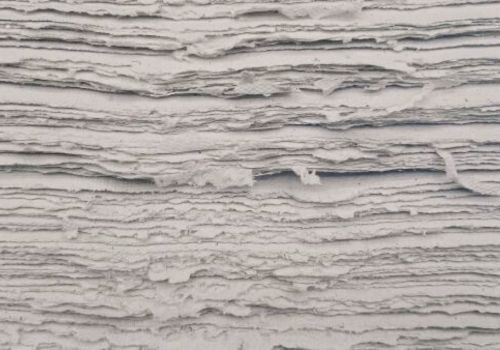What’s in my handmade paper

I like to keep my handmade crafts simple. Let me share with you exactly what I put into my paper during the papermaking process.
There are three main ingredients:
- White recycled paper
- Wheat starch sizing
- Tap water (used to process, removed later)
Let’s break it down.
#1 White recycled paper
My goal is to make white or off-white paper. So, I use uncoated white recycled paper, such as old bills, bank statements, and office paper. Here is a full list of the exact papers I use. It’s cool to show you the previous lives of my paper.
Why I focus on uncoated white recycled paper—and nothing else:
Reason #1: It makes strong paper with fewer chemicals. White recycled paper is usually still early in the recycling loop. That means it’s not far from its original, virgin form, so it still produces durable sheets that perform well. The color varies from white to off-white, often with specks of ink or random letters scattered across the sheet. This is the charm of handmade paper made from recycled materials.
I’ve tested coated papers before—like promotional mail, magazines, and coupons. These are much farther down the recycling loop and contain more chemical coatings. Once blended, the pulp released a strong, off-putting chemical smell. The finished paper was grayish due to the mix of colors and printed images.
I’ve also tried using cardboard boxes and kraft paper. These produced strong brown-toned sheets. They’re pretty, but tougher to work with because the paper is so rigid. It needs to soak for several days before blending. Even then, it still strains the blender quite a bit.
Reason #2: White recycled paper yields white or off-white handmade sheets, which are easy to turn into other crafts—like notebooks, stickers, and prints.
#2 Wheat starch sizing
You can think of this as a kind of glue. This starchy liquid strengthens the paper and gives it some water resistance. I use wheat starch to make this internal sizing—meaning it’s mixed directly into the pulp before I form the sheets. For a deeper dive about sizing, go here.
Note: I’ll update the post once my sizing formula is settled. It’s something you can make at home as well.
#3 Water
I use tap water to blend the shredded paper into pulp and to form the sheets in the vat. Once the sheets are pulled, I remove the water with a sponge.
The papermaking process includes shredding the paper, blending, pulling sheets, removing water, drying, and flattening. Visit this post to learn about the tools, materials, and steps of papermaking.
